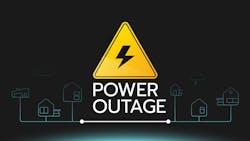CAISO, CPUC, CEC Issue Preliminary Report on Causes of Rotating Outages
The California Independent System Operator (CAISO), the California Public Utilities Commission (CPUC), and the California Energy Commission (CEC) recently issued a Preliminary Root Cause Analysis of the August 2020 heat wave and rotating outages, finding that resource planning targets have not evolved to keep pace with climate change-induced extreme weather events, and that energy market practices did not perform as intended during stressed conditions.
The analysis also outlines short-term and longer-term actions to mitigate electricity shortages and ensure delivery of clean, reliable, and affordable energy.
Following two rotating outages on Aug. 14 and Aug. 15 during a heat storm impacting the Western United States, Governor Gavin Newsom sent a letter to the CAISO, the CPUC, and the CEC, requesting immediate actions to minimize the rotating outages as the heat storm continued and a review of existing forecasting methods and resource adequacy requirements.
On Aug. 19, 2020, the three entities submitted a joint response detailing the immediate actions that were taken to mitigate the forecasted supply shortfall and providing a commitment to develop an after-action report. The recently released Preliminary Root Cause Analysis serves as an intermediate milestone in completing a thorough root cause analysis.
The Preliminary Root Cause Analysis finds that there was no single root cause for the rotating outages on Aug. 14 and Aug. 15. Instead, there are three broad categories of factors that contributed to the outages:
1. The climate change-induced extreme heat storm across the Western United States resulted in the demand for electricity exceeding the existing electricity resource planning targets. The existing resource planning processes are not designed to fully address an extreme heat storm like the one experienced in mid-August.
2. In transitioning to a reliable, clean, and affordable resource mix, resource planning targets have not kept pace to lead to sufficient resources that can be relied upon to meet demand in the early evening hours. This makes balancing demand and supply more challenging. These challenges were amplified by the extreme heat storm.
3. Some practices in the day-ahead energy market exacerbated the supply challenges under highly stressed conditions.
"This preliminary root cause analysis is an important step in helping us learn from the events of Aug. 14 and Aug. 15," said Elliot Mainzer, the new president and CEO of the CAISO. "We are committed to working with the governor's office, state agencies, and the broad set of stakeholders in California and across the Western United States to accelerate our efforts to reliably decarbonize the electricity grid."
“The extreme heat storm in August was an extraordinary 1-in-35-year event that, with climate change, is unfortunately becoming more common," said CPUC President Marybel Batjer. "We will absolutely adjust our planning, procurement, and market policies to meet these changing circumstances and ensure our energy future is clean, reliable, and affordable for all Californians."
"This preliminary report is an important milestone to guide our next steps as we strengthen California's electric grid," said Energy Commission Chair David Hochschild. "The CEC is committed to continuing to work closely with our sister agencies to build a more resilient and reliable grid, and keep pace with rapidly accelerating climate impacts our state is experiencing while also ensuring clean and affordable energy for all Californians."
The Preliminary Root Cause Analysis report also identifies immediate measures to ensure reliable supplies for 2021 and beyond, such as:
1. Update the resource and reliability planning targets to better account for:
a. Heat storms and other extreme events resulting from climate change like the ones encountered in both August and September.
b. A transitioning electricity resource mix to meet the clean energy goals of the state during critical hours of grid need.
2. Ensure that the generation and storage projects that are currently under construction in California are completed by their targeted online dates.
3. Expedite the regulatory and procurement processes to develop additional resources that can be online by 2021. This will most likely focus on resources such as demand response and flexibility. This can complement the resources that are already under construction.
4. Coordinate additional procurement by non-CPUC jurisdictional entities.
5. Enhance CAISO market practices to ensure they accurately reflect the actual balance of supply and demand during stressed operating conditions.
